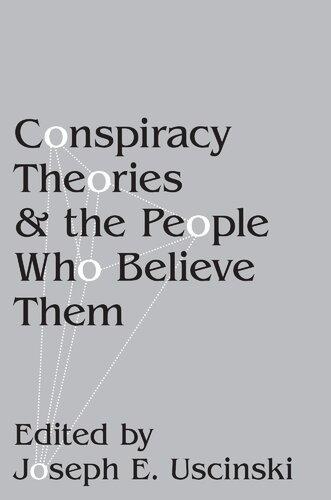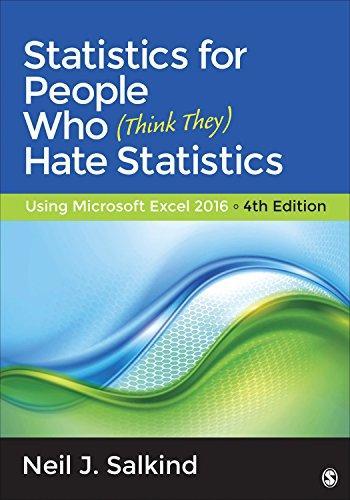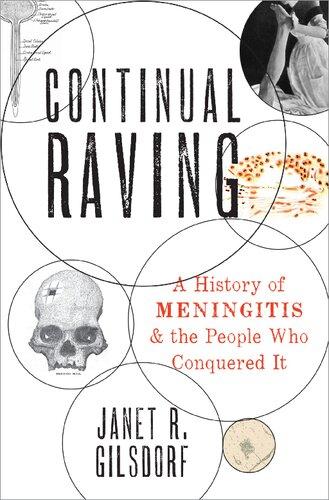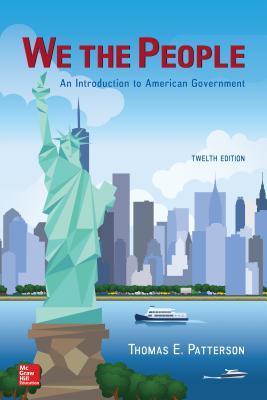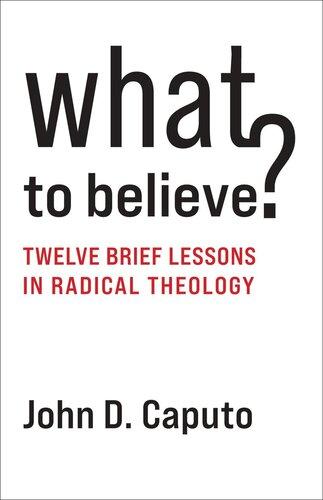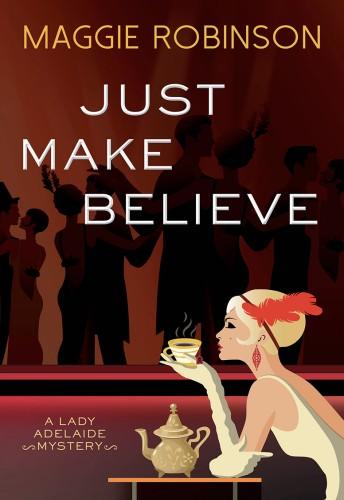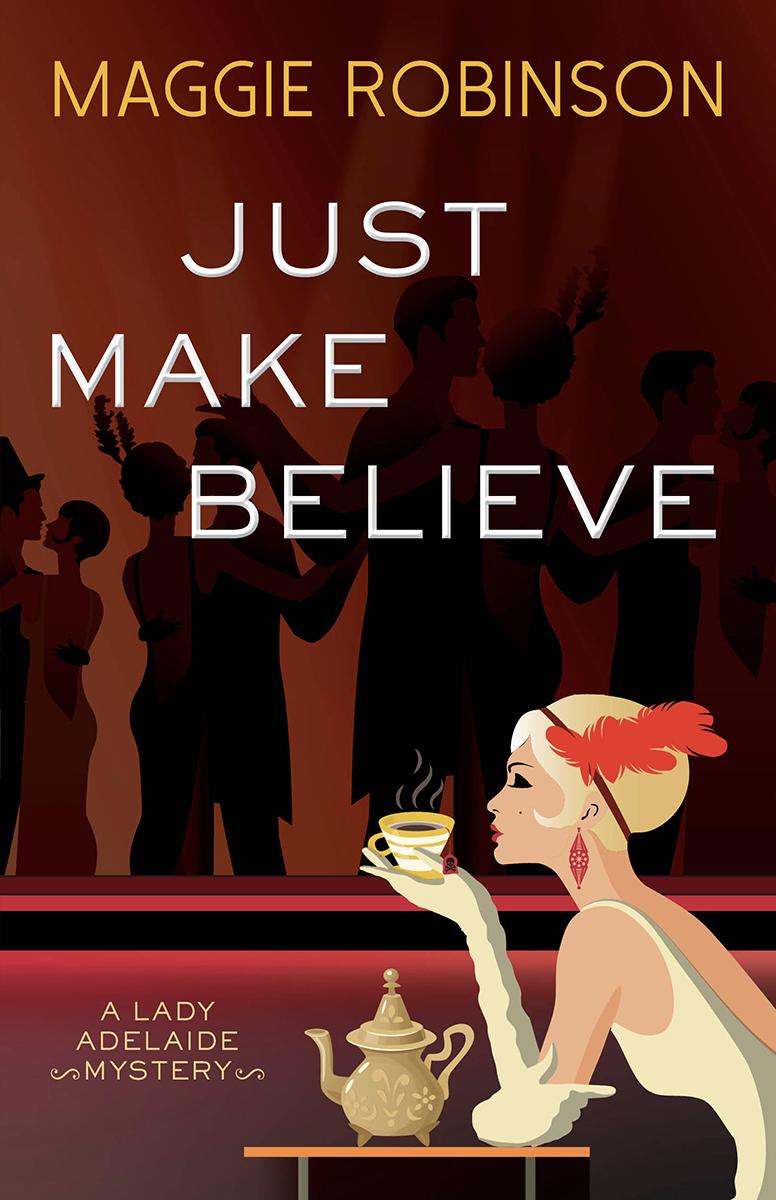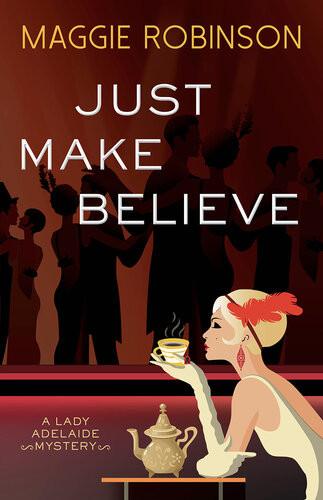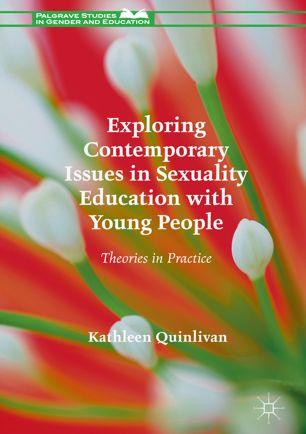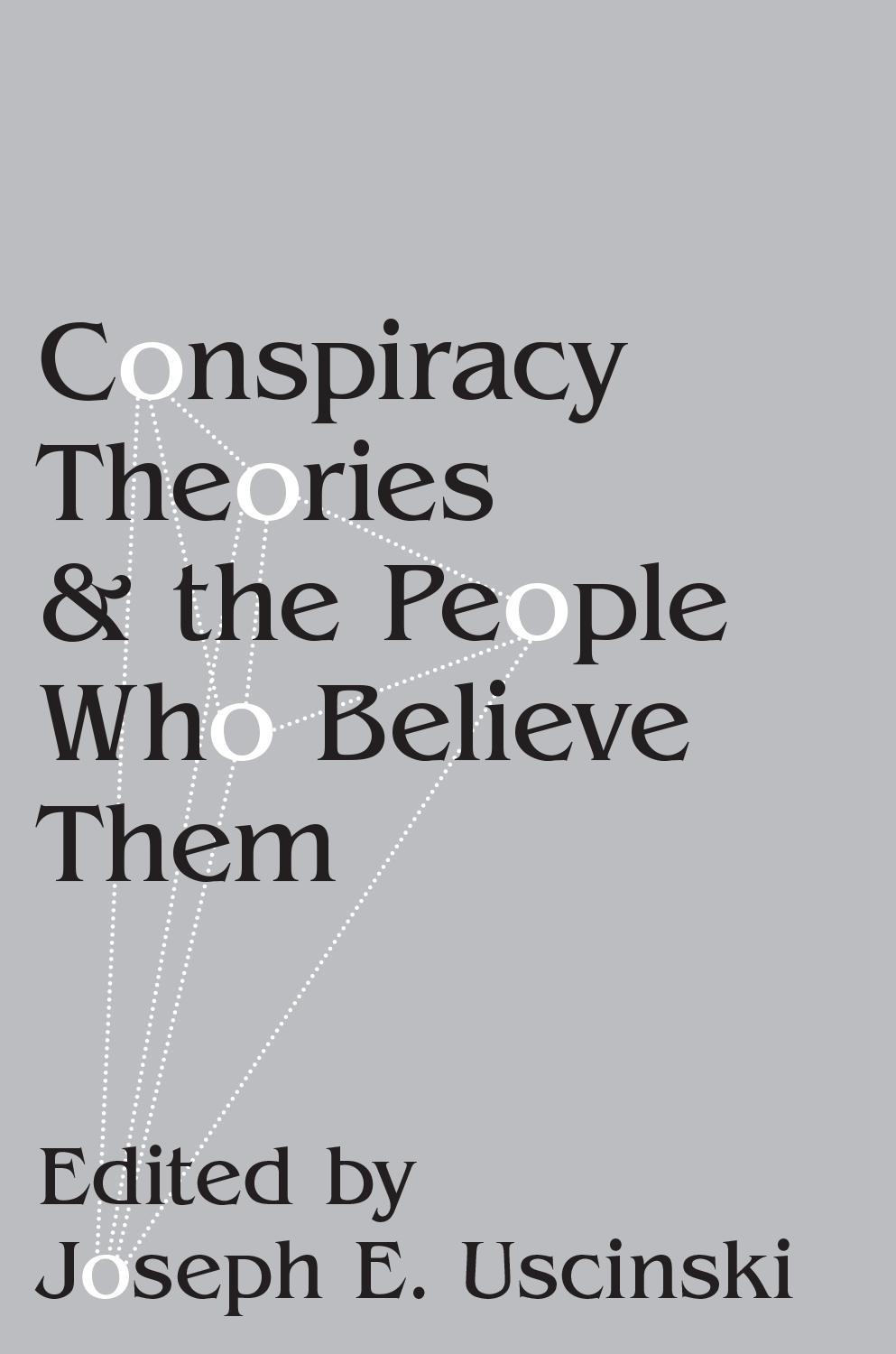Conspiracy Theories and the People Who Believe Them
EDITED BY JOSEPH E. USCINSKI
Oxford University Press is a department of the University of Oxford. It furthers the University’s objective of excellence in research, scholarship, and education by publishing worldwide. Oxford is a registered trade mark of Oxford University Press in the UK and certain other countries.
Published in the United States of America by Oxford University Press 198 Madison Avenue, New York, NY 10016, United States of America.
© Oxford University Press 2019
All rights reserved. No part of this publication may be reproduced, stored in a retrieval system, or transmitted, in any form or by any means, without the prior permission in writing of Oxford University Press, or as expressly permitted by law, by license, or under terms agreed with the appropriate reproduction rights organization. Inquiries concerning reproduction outside the scope of the above should be sent to the Rights Department, Oxford University Press, at the address above.
You must not circulate this work in any other form and you must impose this same condition on any acquirer.
Library of Congress Cataloging-in-Publication Data
Names: Uscinski, Joseph E., editor.
Title: Conspiracy theories and the people who believe them / edited by Joseph E. Uscinski. Description: New York, NY : Oxford University Press, [2019] | Includes bibliographical references and index.
Identifiers: LCCN 2018012939| ISBN 9780190844073 (hard cover) | ISBN 9780190844080 (pbk.)
Subjects: LCSH: Conspiracy theories. | Conspiracies. Classification: LCC HV6275 .C6633 2019 | DDC 001.9—dc23 LC record available at https://lccn.loc.gov/2018012939
1 3 5 7 9 8 6 4 2
Paperback printed by WebCom, Inc., Canada Hardback printed by Bridgeport National Bindery, Inc., United States of America
CONTENTS
Preface ix
List of Contributors xiii
1. Down the Rabbit Hole We Go! 1
Joseph E. Uscinski
2. The History of Conspiracy Theory Research: A Review and Commentary 33
Michael Butter and Peter Knight
SECTION I WHAT IS A CONSPIRACY THEORY?
Joseph E. Uscinski
3. What We Mean When We Say “Conspiracy Theory” 53
Jesse Walker
4. Conspiracy Theory: The Nineteenth-Century Prehistory of a Twentieth-Century Concept 62
Andrew McKenzie- McHarg
5. Media Marginalization of Racial Minorities: “Conspiracy Theorists” in U.S. Ghettos and on the “Arab Street” 82
Martin Orr and Ginna Husting
6. Conspiracy Theories and Philosophy: Bringing the Epistemology of a Freighted Term into the Social Sciences 94
M R. X. Dentith
SECTION II HOW DO CONSPIRACY THEORISTS AND NON- CONSPIRACY THEORISTS INTERACT?
Joseph E. Uscinski
7. On the Democratic Problem of Conspiracy Politics 111
Alfred Moore
8. The Politics of Disruption: Social Choice Theory and Conspiracy Theory Politics 122
Matthew D. Atkinson and Darin DeWitt
9. Learning about Conspiracy Theories: Experiences in Science and Risk Communication with the Public about the Fukushima Daiichi Disaster 135
Jay T. Cullen
10. In Whose Hands the Future? 149
Stephan Lewandowsky
11. Conspiracy Theory Phobia 178
Juha Räikkä and Lee Basham
12. Conspiracy Thinking, Tolerance, and Democracy 187
Steven M. Smallpage
SECTION III ARE CONSPIRACY THEORIES “ANTI- SCIENCE”?
Joseph E. Uscinski
13. Don’t Trust the Scientists! Rejecting the Scientific Consensus “Conspiracy” 201
Josh Pasek
14. Conspiratorial Thinking and Dueling Fact Perceptions 214
Morgan Marietta and David C. Barker
15. The Conspiracy Theory Pyramid Scheme 226
Ted Goertzel
SECTION IV WHAT IS THE PSYCHOLOGY OF CONSPIRACY THEORIZING?
Joseph E. Uscinski
16. Conspiracy Theory Psychology: Individual Differences, Worldviews, and States of Mind 245
Michael J. Wood and Karen M. Douglas
17. Conspiracy Rumor Psychology 257
Nicholas Difonzo
18. The Truth Is Around Here Somewhere: Integrating the Research on Conspiracy Beliefs 269
Preston R. Bost
SECTION V WHAT DO CONSPIRACY THEORIES LOOK LIKE IN THE UNITED STATES?
Joseph E. Uscinski
19. Conspiracy Theories in U.S. History 285
Kathryn S. Olmstead
20. Polls, Plots, and Party Politics: Conspiracy Theories in Contemporary America 298
Adam M. Enders and Steven M. Smallpage
21. How Conspiracy Theories Spread 319
Darin DeWitt, Matthew D. Atkinson, and Drew Wegner
SECTION VI WHAT DO CONSPIRACY THEORIES LOOK LIKE AROUND THE WORLD?
Joseph E. Uscinski
22. Who Believes in Conspiracy Theories in Great Britain and Europe? 337
Hugo Drochon
23. Why the Powerful (in Weak States) Prefer Conspiracy Theories 347
Scott Radnitz
24. Conspiracy Theories in Post- Soviet Russia 360
Ilya Yablokov
25. The Collective Conspiracy Mentality in Poland 372
Wiktor Soral, Aleksandra Cichocka, Michał Bilewicz, and Marta Marchlewska
26. The Conspiratorial Style in Turkish Politics: Discussing the Deep State in the Parliament 385
Türkay Salim Nefes
27. The Hidden and the Revealed: Styles of Political Conspiracy Theory in Kirchnerism 395
Tanya Filer
SECTION VII HOW SHOULD WE LIVE WITH CONSPIRACY THEORIES?
Joseph E. Uscinski
28. Conspiracy Theories and Religion: Superstition, Seekership, and Salvation 411
David G. Robertson and Asbjørn Dyrendal
29. The Credulity of Conspiracy Theorists: Conspiratorial, Scientific, and Religious Explanation Compared 422
Brian L. Keeley
30. Empowerment as a Tool to Reduce Belief in Conspiracy Theories 432
Jan- Willem van Prooijen
31. Conspiracy Theories for Journalists: Covering Dubious Ideas in Real Time 443
Joseph E. Uscinski
References 453
Index 507
PREFACE
The study of conspiracy theories is multidisciplinary, and perspectives on the topic vary widely. This will become readily apparent should you read the volume from start to finish (which I recommend, of course!). To include as many perspectives as possible, 31 chapters written by 40 authors lie beyond. What I hope will make this volume valuable to readers is that all of the authors are not only experts but are passionate about the study of conspiracy theories. I hope this volume pushes forward the study of conspiracy theories and leads readers to a better understanding of their own beliefs.
I had no idea what I was getting into eight years ago. My friend and colleague at the University of Miami, Joe Parent, came to me with an idea for a paper: “Conspiracy theories!” he exclaimed, “the causes and consequences of conspiracy theories!” I didn’t know if he was being serious or not, and I was inclined to turn him down, hoping that we could find something more mundane to work on together. At the time, conspiracy theories were well off the beaten path of political science. A few scholars were starting to collect data, but there had not been any major publications focusing on conspiracy theories in the discipline as far as I could tell, even going back decades. This meant there would likely be little readymade data available, and as a survey researcher this meant that there would likely not be any easy way to study changes over time. Moving forward with the project would require a serious investment of time and money just to collect data. Despite my misgivings, we moved forward and collected data for three years. What was supposed to be a one-off paper became a book project and then, for me, a research agenda.
In spring 2015 I organized and hosted a large conference on conspiracy theories. Fifty attendees from ten countries and fifteen disciplines attended. It was amazing to see just how varied the perspectives were, from the philosophers to the political scientists, the psychologists to the historians. Having read most of the literature on the topic, I knew that some scholars were more positively inclined toward conspiracy theories than others. I did not know that the dividing line between those
who studied them and those who believed them might be so fuzzy at times! To wit, the conference was reported on by both Reason Magazine (an expressly anti–conspiracy theory outlet) and by Global Research (an outlet brimming with conspiracy theories.) Their viewpoints were obviously very different.
This volume springs partially from that conference. The discussions that took place provided firsthand evidence that more needed to be done to bring together scholars from the varied disciplines. But, it also provided evidence that any such attempt could easily end in disaster. Chasms separated the views of some scholars, and corralling them around shared themes would be akin to herding cats. Being a masochist, I decided to push forward anyway, and in late spring 2015 I fashioned a prospectus that included philosophers, journalists, historians, political scientists, sociologists, communication scholars, psychologists, social psychologists, religion scholars, American Studies scholars, international relations scholars, epistemologists, and a marine chemist.
Over the course of the two and a half years it took to sign the contract with Oxford University Press and deliver the volume, authors and chapters shuffled in and out of the project. Because of natural limitations there are some obvious gaps in the volume, nonetheless I think what is presented here represents a strong step forward. If I had my way, the volume would be more encompassing than it is now, with more authors and more chapters, but perhaps that’s what a second edition is for.
Knowing what a challenge this project would be, the editorial board, delegates, and reviewers at Oxford were all adamant that I use a very heavy hand in editing the chapters. This was first and foremost to prevent needless overlap while keeping the chapters substantively tied together. But this was also to bring out the shared themes among the chapters, some of which lie beneath the surface but tie the volume together very nicely. While my university was very supportive of the project—they offered to fund another conference to bring the contributing authors together—these plans unfortunately could not be realized when my lovely wife was diagnosed with cancer. I am happy to report that she endured chemoradiation like a champ and is on the road to a full recovery. I am grateful to all of this volume’s authors, who were tremendously understanding and helpful as my wife and I went through this ordeal. I know I owe all of them a trip to Miami as I originally promised.
Regardless, it has been an overwhelming pleasure working with this group of scholars. Some chapters underwent dozens of revisions since 2015. I believe that readers will appreciate the work that the contributors invested. I certainly do!
The study of conspiracy theories is at a tipping point. The social sciences, in particular, have invested heavily into the topic during the last ten years, and psychologists have been publishing studies almost daily it seems. It is the ideal time for the various
perspectives to come together and provide a springboard that will fuel the next ten years of inquiry.
Equally important, conspiracy theories are now a topic of prime social and political importance. Given events all over the world, but particularly in the United States, United Kingdom, and Russia, this volume is necessary. It is designed for those struggling to make sense of our chaotic public sphere. One goal throughout this project was to make the ideas as accessible as possible to the public. Ironically, there exist a lot of conspiracy theories, misinformation, and fake news about conspiracy theories, misinformation, and fake news. For example, it is a common trope on Twitter that the term conspiracy theory is itself part of a conspiracy. My hope is that by appealing to a crossover audience, we can make sure that the best information about conspiracy theories is available to the public. (And no, the CIA did not create the term conspiracy theory to stop JFK conspiracy theories. If they had, it would have been the worst plot ever, given that by the 1990s upwards of 80 percent of Americans believed those theories.)
I want to begin the acknowledgments by expressing my deepest gratitude to the 39 authors who were kind enough to join this project. The patience and good humor they have shown toward me is much appreciated and a model of professionalism. I have been lucky enough to build friendships with many of them over the last decade.
I need to recognize the scholars who attended my conference in Miami in 2015. The conversations at that meeting not only inspired this volume, but several research agendas. I am very grateful for everyone’s participation.
Over the last few years I have had the privilege of associating with some very excellent funded projects which have greatly advanced the study of conspiracy theories. In particular, the Conspiracy & Democracy Project at CRASSH, University of Cambridge, was kind enough to invite Joe Parent and me to be visiting fellows in 2014; it was a pleasure to work with their PIs, postdocs, and staff. The friendships that developed from that experience have been incredibly rewarding. In 2015, Peter Knight and Michael Butter invited me to help brainstorm a proposal they were putting together for a large networking grant. Their proposal was successful (eCost Conspiracy), and it has been a pleasure being involved with Peter, Michael, and their excellent staff. Finally, I need to thank Karen Douglas and her team who I had the good fortune to work with at the University of Kent. It was a pleasure to be a small part of their CREST grant focusing on conspiracy theories and security. These projects have resulted in great scholarship and have done much to bring scholars together.
This is my second trip around the block with Oxford; I could not be more proud to publish in one of the world’s most important academic presses. I owe much to Dave McBride and his team for shepherding this project, as well as American Conspiracy Theories. Thanks as always, Dave!!
At the University of Miami I need to thank the university administration and the College of Arts & Sciences who have been very supportive of this project. For funding the conference I need to thank Dean Leonidas Bachas, College of Arts & Sciences, and Jon West, Chair of Political Science. University of Miami is a great place to study, work, and live. And of course, I could not have completed this project without the help of my colleagues, particularly while my wife was sick: Casey Klofstad, Joe Parent, Greg Koger, Costa Pischedda, Mike Touchton, Cole Taratoot, Jennifer Connolly, Louise Davidson- Schmich, Merike Blofield, Art Simon, Elton Skendaj, Patrick Thompson, and Fred Frohock. I need to thank my family who have always supported my various enterprises, this being no different. I save my final thank yous, for my wife Leilany, and Benny and Ruby for their unending love and support.
November 22, 2017
CONTRIBUTORS
Matthew D. Atkinson is an Assistant Professor of Political Science at Long Beach City College. He received his doctorate from UCLA, and his work has been published in the Journal of Politics, British Journal of Political Science, Quarterly Journal of Political Science, Political Research Quarterly, and PS: Political Science & Politics
David C. Barker is Director of the Center for Congressional and Presidential Studies and Professor of Political Science, American University, author of Rushed to Judgment: Talk Radio, Persuasion, and American Political Behavior and Representing Red and Blue: How the Culture Wars Change the Way Citizens Speak and Politicians Listen.
Lee Basham is a Professor of Philosophy at South Texas College and the University of Texas, Rio Grande Valley. One of the first contemporary philosophers to defend the rational legitimacy of conspiracy theorizing, he is author of a number of journal articles and book chapters on epistemic issues in Western information hierarchies, as well as on social science assumptions and practices surrounding the evaluation of conspiracy theorizing and theorists.
Michał Bilewicz is an Associate Professor of Psychology at the University of Warsaw, Poland, where he chairs the Center for Research on Prejudice. His research interests include conspiracy theories, reconciliation processes, dehumanization, prejudice, and collective moral emotions. In 2013 he co-edited a special issue of Journal of Social Issues on the consequences of genocide, and in 2015 a volume The Psychology of Conspiracy (Routledge).
Preston R. Bost earned his Doctorate in Cognitive Psychology from Vanderbilt University in 1998. He joined the Wabash College faculty two years later, and for
fifteen years has taught a wide range of courses focusing on cognitive processes such as visual perception, communication, decision making, and memory. For the last several years, he and his student collaborators have been conducting studies on the psychology of conspiracy beliefs; his most recent article on the topic appears in the January/February 2015 issue of Skeptical Inquirer magazine.
Michael Butter has been a Professor of American Literary and Cultural History at the University of Tübingen since 2014. He received his PhD from the University of Bonn in 2007 and his Habilitation from the University of Freiburg in 2012. He is the author of three monographs: The Epitome of Evil: Hitler in American Fiction, 1939–2002 (New York: Palgrave, 2009), Plots, Designs, and Schemes: American Conspiracy Theories from the Puritans to the Present (Berlin/Boston: de Gruyter, 2014), and Der »Washington-Code«: Zur Heroisierung amerikanischer Präsidenten, 1775–1865 (Göttingen: Wallstein, 2016). He is currently completing an introduction to conspiracy theories, to be published in German by Suhrkamp in 2018. Together with Peter Knight, he is the co-director of the EU COST Action COMPACT [Comparative Analysis of Conspiracy Theories], and co-editor of the Routledge series Research in Conspiracy Theories, and the forthcoming Routledge Handbook of Conspiracy Theories.
Aleksandra Cichocka is a Senior Lecturer in Political Psychology at the University of Kent, where she leads the Political Psychology Lab and the MSc in Political Psychology. She is a member of the Governing Council of the International Society of Political Psychology. Her research interests include group identification and inter-group relations (especially the role of collective narcissism), political ideology, and political behavior.
Jay T. Cullen is a Professor of Oceanography at the University of Victoria. His research specialty is the chemistry of metals and artificial radioactive isotopes in seawater and living organisms. He was awarded the Craigdarroch Research Award for Excellence in Knowledge Mobilization and named Provost’s Engaged Scholar at the University in recognition of his efforts in science communication, education, and public outreach. Cullen is Project Lead of the Integrated Fukushima Ocean Radionuclide Monitoring project that is investigating the impact of the 2011 Fukushima nuclear disaster on ocean and public health in Canada. He was also shortlisted in the competition, but not ultimately selected, to become one of Canada’s next astronauts during the Canadian Space Agency’s 2016 Astronaut Recruitment campaign. He lives with his wife and three children in Victoria, British Columbia.
M R. X. Dentith received their PhD in Philosophy from the University of Auckland, where they wrote their dissertation on the epistemology of conspiracy theories. Author of the first single-author book on conspiracy theories by a
philosopher (The Philosophy of Conspiracy Theories, Palgrave Macmillan 2014), their current research interest is in developing a framework for the investigation of conspiracy theories, focusing on the role of expertise and evidence evaluation in complex epistemic communities. They also have a side project developing an account of how we might talk about the epistemology of secrecy generally, which should probably be kept secret until such time it is ready to be leaked to the public.
Darin DeWitt is an Assistant Professor of Political Science at California State University, Long Beach. He received his PhD from UCLA, and his scholarship has been published in Celebrity Studies, PS: Political Science and Politics, and Urban Affairs Review
Nicholas DiFonzo is Professor of Psychology at Rochester Institute of Technology. He has published over 40 articles, book chapters, encyclopedia entries, and technical reports on rumor, and given over 50 presentations and invited addresses at academic conferences on rumor. His books include Rumor Psychology: Social & Organizational Approaches (RumorPsychology.com; written with Prashant Bordia), and The Watercooler Effect: A Psychologist Explores the Extraordinary Power of Rumors (TheWaterCoolerEffect.com), which has been translated into six different languages. He has been interviewed by NPR, CNN, MSNBC, The New York Times, The Boston Globe, and The Los Angeles Times, and routinely assists the press in the analysis of rumor and gossip. Dr. DiFonzo has served as an expert trial witness for corporations and government entities on topics involving defamatory workplace rumors, malicious product rumors, and slanderous conspiracy rumors.
Karen M. Douglas is a Professor of Social Psychology at the University of Kent. She studies the psychology of conspiracy theories, including the psychological factors and processes associated with conspiracy belief and the consequences of conspiracy theories for people’s political, health, and environmental decisions.
Hugo Drochon is a Postdoctoral Research Fellow on the Conspiracy and Democracy Project at CRASSH, University of Cambridge. He is the author of Nietzsche’s Great Politics (Princeton 2016) and is currently working on the history of elites and democracy in the twentieth century.
Asbjørn Dyrendal is Professor in History of Religions at the Norwegian University of Science and Technology. His primary research interests revolve around new religious movements and conspiracy culture, of which the latter currently takes most of his time. Recent work includes The Invention of Satanism (coauthor, Oxford University Press 2016) and the forthcoming Handbook of Conspiracy Theory and Contemporary Religion (co-editor, Brill 2018).
Adam M. Enders is an Assistant Professor of Political Science at the University of Louisville. He is the coauthor of articles on the interaction between conspiratorial thinking and partisanship appearing in the British Journal of Political Science and Research and Politics, as well as other articles on mass polarization and value orientations.
Tanya Filer is a Research Fellow at the University of Cambridge, based at the Centre for Research in the Arts, Social Sciences and Humanities (CRASSH). At CRASSH, she is a member of the Leverhulme Trust Conspiracy and Democracy Project. Her current research examines the intersections of media, political communications, and digital technologies, with a regional focus on Latin America. Her work appears in journals including Information, Communication & Society, International Journal of Politics, Culture, and Society and Hispanic Research Journal. Tanya serves on the Council on the Future of Information and Entertainment at the World Economic Forum.
Ted Goertzel is Emeritus Professor of Sociology at Rutgers University in Camden, NJ, and Adjunct Professor at Washington State Community College in Marietta, Ohio. His publications include “Belief in Conspiracy Theories,” (Political Psychology, 1994), “The Conspiracy Meme,” (Skeptical Inquirer, 2011), “Conspiracy Theories in Science” (EMBO Reports, 2010) and Turncoats and True Believers (Prometheus Press, 1992). He also publishes on Brazilian politics and on artificial general intelligence.
Ginna Husting is Associate Professor of Sociology and the Director of Gender Studies at Boise State University. Her research spans sociology, cultural studies, feminist political theory, and symbolic interaction, focusing on identity change, popular political culture, emotion, Hannah Arendt, and belonging/otherness.
Brian L. Keeley is Professor of Philosophy at Pitzer College in Claremont, California, where he also teaches in the Science, Technology & Society and Neuroscience Programs, in addition to serving as Extended Graduate Faculty in Philosophy at Claremont Graduate University. In addition to having edited a volume in the Cambridge University Press Contemporary Philosophy in Focus series on Paul Churchland, he has published over 40 articles, book chapters, and reviews on topics including the philosophy of neuroscience, the nature of the senses, artificial life, and the unusual epistemology of contemporary conspiracy theories.
Peter Knight is a Professor of American Studies at the University of Manchester, U.K., where he is Chair of the Department of English Literature, American Studies, and Creative Writing. He is the author of Conspiracy Culture: From the Kennedy Assassination to “The X-Files” (2000), The Kennedy
Assassination (2007) and Reading the Market: Genres of Financial Capitalism in Gilded Age America (2016), and the editor of Conspiracy Nation: The Politics of Paranoia in Postwar America (2002) and Conspiracy Theories in American History: An Encyclopedia (2004, 2 vols). Together with Michael Butter, he is the co- director of the EU COST Action COMPACT [Comparative Analysis of Conspiracy Theories], and co- editor of the Routledge series Research in Conspiracy Theories, and the forthcoming Routledge Handbook of Conspiracy Theories.
Stephan Lewandowsky is a Cognitive Scientist at the University of Bristol. He was an Australian Professorial Fellow from 2007 to 2012, and was awarded a Discovery Outstanding Researcher Award from the Australian Research Council in 2011. He held a Revesz Visiting Professorship at the University of Amsterdam in 2012, and received a Wolfson Research Merit Award from the Royal Society upon moving to the U.K. in 2013. His research examines people’s memory, decision making, and knowledge structures, with a particular emphasis on how people update information in memory. He has published over 140 scholarly articles, chapters, and books, including numerous papers on how people respond to corrections of misinformation and what variables determine people’s acceptance of scientific findings.
Marta Marchlewska is a Researcher at the University of Warsaw (Institute for Social Studies and Department of Psychology). Her main research interests focus on psychological underpinnings and consequences of beliefs in conspiracy theories (with particular emphasis on defensive self- esteem, defensive in- group identification, need for cognitive closure, and emotion regulation strategies).
Morgan Marietta is Associate Professor of Political Science, University of Massachusetts Lowell, author of A Citizen’s Guide to American Ideology: Conservatism and Liberalism in Contemporary Politics, The Politics of Sacred Rhetoric: Absolutist Appeals and Political Persuasion, A Citizen’s Guide to the Constitution and the Supreme Court: Constitutional Conflict in American Politics, and One Nation, Two Realities: Dueling Facts in American Democracy (forthcoming from Oxford University Press, with David Barker).
Andrew McKenzie-McHarg is a Research Fellow on the Leverhulme-funded project “Conspiracy and Democracy: History, Political Theory and Internet Research” at the University of Cambridge. His interests have extended from antiJesuit rhetoric in the Early Modern Period to radical streams of thought in late Enlightenment Germany. He is currently completing a book on the conceptual history of conspiracy theory.
Alfred Moore is a Lecturer in Political Theory at the University of York. He works on political theory, deliberative democracy, and the politics of expertise. He has taught philosophy at University College Cork, was a Marie Curie Research Fellow at the University of British Columbia, and a Democracy Fellow at the Ash Center at Harvard University. Until 2017 he was a research fellow at Cambridge University working on the Leverhulme Trust project “Conspiracy and Democracy: History, Political theory, Internet,” which supported the writing of his chapter.
Türkay Salim Nefes completed his PhD at the Sociology Department of the University of Kent. Currently, he is a Research Fellow at the Sociology Department of the University of Oxford. He is also a William Golding Junior Research Fellow at the Brasenose College of the University of Oxford. His main research interest is the diffusion and impacts of conspiracy theories and anti- Semitism. Türkay has published his work on conspiracy rhetoric in various academic journals including British Journal of Sociology. On anti- Semitism, he published a book by Palgrave MacMillan, Online Anti-Semitism in Turkey, and various journal articles.
Kathryn S. Olmsted is a Professor of History at the University of California, Davis. She is the author of four books: Right Out of California: The 1930s and the Big Business Roots of Modern Conservatism (New Press, 2015); Real Enemies: Conspiracy Theories and American Democracy, World War I to 9/11 (Oxford, 2009); Red Spy Queen: A Biography of Elizabeth Bentley (North Carolina, 2002); and Challenging the Secret Government: The Post-Watergate Investigations of the CIA and FBI (North Carolina, 1996). She has also co-edited a book on the history of the Central Intelligence Agency and published several journal articles and book chapters that highlight her overlapping areas of expertise: conspiracy theories, government secrecy, espionage, counterintelligence, and anticommunism.
Martin Orr is Professor of Sociology at Boise State University. His research and teaching interests include social inequality, political sociology, globalization, social movements, mass media, and the environment. He has published on antiglobalization movements, the role of oil in social development and foreign policy, sociological theory, and the politics of “conspiracy theory.”
Josh Pasek is Assistant Professor of Communication Studies, Faculty Associate in the Center for Political Studies, and Core Faculty for the Michigan Institute for Data Science at the University of Michigan. His research explores how new media and psychological processes each shape political attitudes, public opinion, and political behaviors. Josh also examines issues in the measurement of public opinion
including techniques for reducing measurement error and improving population inferences. His work has been published in Public Opinion Quarterly, Political Communication, Communication Research, and the Journal of Communication among other outlets.
Scott Radnitz is an Associate Professor in the Jackson School of International Studies and Director of the Ellison Center for Russian, East European, and Central Asian Studies at the University of Washington. He does research on post- Soviet politics, covering topics such as protests, authoritarianism, identity, and state building. His book, Weapons of the Wealthy: Predatory Regimes and Elite-Led Protests in Central Asia, was published by Cornell University Press in 2010. His publications include Comparative Politics, Comparative Political Studies, British Journal of Political Science, Journal of Democracy, Foreign Policy, and Slate.
Juha Räikkä is a Professor of Philosophy at the University of Turku, Finland. His research interests concern issues of privacy, justice, forgiveness, self-deception, and minority rights. He has published papers in journals such as The Monist, Metaphilosophy, The Journal of Political Philosophy, Bioethics, Australasian Journal of Philosophy, Utilitas, Res Publica, The Journal of Value Inquiry, and Social Theory and Practice.
David G. Robertson is Lecturer in Religious Studies at the Open University, and Co-founder of the Religious Studies Project. His work applies critical theory to the study of alternative and emerging religions and conspiracy theories. He is the author of UFOs, the New Age and Conspiracy Theories: Millennial Conspiracism (Bloomsbury 2016) and co-editor of the Handbook of Conspiracy Theories and Contemporary Religion (Brill 2018).
Steven M. Smallpage is an Assistant Professor of Political Science at Stetson University. He has coauthored work on conspiracy thinking and polarization. His main research areas are American political psychology and the history of political liberalism.
Wiktor Soral is a Researcher at the University of Warsaw (Institute for Social Studies and the Center for Research on Prejudice), Poland. His main research interest focus on the role of negative psychological factors (e.g., lack of control, uncertainty, threat) in processing of social information (related to self, in-group and out-group). In 2015 he co-edited a volume The Psychology of Conspiracy (Routledge).
Joseph E. Uscinski is associate professor of political science at the University of Miami College of Arts & Sciences in Coral Gables, FL and co-author of American Conspiracy Theories (Oxford, 2014).
Jan-Willem van Prooijen received his PhD from the Department of Social and Organizational Psychology at Leiden University in 2002 on a thesis about procedural justice. At present he is Associate Professor at the Department of Experimental and Applied Psychology at VU Amsterdam, and Senior Researcher at the Netherlands Institute for the Study of Crime and Law Enforcement. His current research interests include conspiracy theories, justice and morality, and ideological extremism.
Jesse Walker is books editor of Reason Magazine and author of The United States of Paranoia: A Conspiracy Theory (HarperCollins, 2013).
Drew Wegner is a JD Candidate at Harvard Law School.
Michael J. Wood is a Lecturer in Psychology at the University of Winchester. He completed his PhD at the University of Kent in 2013 in the psychology of conspiracy theories, and continues to study how conspiracy theories fit into broader worldviews and how they are communicated via social media and other online discussion platforms.
Ilya Yablokov received his doctoral degree from the University of Manchester in 2014. His research interests include conspiracy theories, nation building, and politics in post- Soviet Russia; the history of post- Soviet journalism; and international broadcasting. His work has been published in a number of peer-reviewed journals. In 2015 he won the British Association for Slavonic and East European Studies Prize for the best peer-reviewed article published by a postgraduate student. His book Fortress Russia: Conspiracy Theories in the Post-Soviet World (Cambridge: Polity) will be published in June 2018. Ilya teaches Russian politics, history, and media at the University of Leeds (U.K.).
Down the Rabbit Hole We Go!
Joseph E. Uscinski
Conspiracy theories are not fringe ideas, tucked neatly away in the dark corners of society. They are politically, economically, and socially relevant to all of us. They are intertwined with our everyday lives in countless ways. Conspiracy theories are everywhere, and, like other ideas, they have consequences.
When people believe conspiracy theories they may act on them. In democracies, conspiracy theories can drive majorities to make horrible decisions backed by the use of legitimate force. Conspiracy beliefs can conversely encourage abstention. Those who believe the system is rigged will be less willing to take part in it.1 Conspiracy theories form the basis for some people’s medical decisions; this can be dangerous not only for them but for others as well.2 For a select few believers, conspiracy theories are instructions to use violence.3
There is no time in recorded history without conspiracy theories. Whether we are examining accounts of ancient Rome, medieval Europe, or twentieth century America, conspiracy theories have driven beliefs and action. Scares, panics, purges, and bloodshed have sometimes been the result.
Conspiracy theories are timeless, but this volume is driven by their timeliness. They have become a marker of the early twenty-first century. Conspiracy theories have dominated elite discourse in many parts of the world and have become the rallying cry of major political movements. While studies have yet to determine their salience and impact relative to previous eras, countless scholars and journalists are looking to conspiracy theories to explain our contemporary affairs.
The most alarming developments in world politics are closely interwoven with conspiracy theories. Recent displays of populism, nationalism, xenophobia, and racism are all accompanied by conspiracy narratives. Many world leaders have justified authoritarianism and the consolidation of power with scapegoating and accusations of conspiracy. The Internet, once touted as an instrument of democracy, has been used to manipulate the masses—for profit or power—with fake news consisting mainly of conspiracy theories constructed out of whole cloth. To break
the current trends, scholars need to better understand how conspiracy theories create, reinforce, and give cover to humanity’s worst impulses.
There are an infinite number of conspiracy theories for people to believe in. Even though it is possible for opinion polls to ask only about a few, current figures suggest that everyone—no matter where they are from—believes in at least one conspiracy theory.4 I am willing to go further and suggest that everyone believes in at least a few. Some people believe in dozens if not hundreds of conspiracy theories. It is easy to look at the polls showing the numbers of people who believe in faked birth certificates, alien cover-ups, and false flags, and ask, “they don’t all really believe in that stuff, do they?” They do.5
Our culture is awash in conspiracy theories. Blockbuster movie franchises such as the Jason Bourne series, and popular television shows such as The Blacklist and Stranger Things, sell fictional accounts of malevolent global conspiracies. One of the most popular shows to air on the Animal Planet network – a network supposedly about real animals – documents a government conspiracy to conceal and kill mermaids.6 Likewise, the History Channel has seemingly ditched history in favor of Ancient Aliens, a show comprised of bizarre conspiracy narratives. Because of their cultural prominence, even society’s more scientific spaces must address conspiracy theories. Public intellectuals and science communicators such as Bill Nye, Michael Shermer, Neil deGrasse Tyson, and Brian Dunning continually have to defend science and reason from popular conspiracy theories. Our less scientific spaces are rife with conspiracy theories as well. Social media like Facebook and Twitter, in some instances, favor conspiracy theories over more accurate information.7 If this were not enough, there is now an annual Conspira-sea cruise where passengers can enjoy fun in the sun, pristine beaches, and nightly UFO watch parties, all while “taking back power from corrupt and greedy institutions.”8
This volume is about conspiracy theories and the people who believe them. Thirty chapters by forty authors lay beyond this, each attempting to tackle an important aspect of a largely misunderstood phenomenon. Conspiracy theories have existed almost as long as recorded history, yet as Andrew McKenzie-McHarg will show in Chapter 4, the term conspiracy theory did not come to be associated with the concept of conspiracy theory until the late nineteenth century. Perhaps the only thing more sluggish than our vernacular has been scholars’ efforts to address the topic. The historian Richard Hofstadter and a few other others studied conspiracy theories in the mid-twentieth century, but these efforts did not culminate into a sustained research agenda.9 In the 1990s cultural scholars reopened the investigation, and as the new century approached, philosophers took an interest as well.10 But, as Michael Butter and Peter Knight will make clear in the next chapter, a sustained interdisciplinary research agenda did not emerge until around 2007 when psychologists entered the field. Political scientists and other social scientists soon followed, and a decade later new studies addressing the topic are being published nearly every day.
Journalists appear equally interested. Until recently, prestigious news outlets treated conspiracy theories as fringe phenomena, but have since elevated them to top billing. For example, in November 2017, The New York Times published an article with the term conspiracy theories in it nearly every day. For comparison, the Times published zero such articles that same month forty years prior.
Now is the time for scholars to share what we know and to push our understanding of conspiracy theories forward. The following thirty chapters bring together the most promising perspectives with the hope of fueling the next decade of research. Perhaps just as important, each chapter was designed with accessibility in mind: little jargon, no regression tables, and clear concise writing. This volume is written for scholars, journalists, and students, but also for regular folks with an interest in the topic. Most of the chapters synthesize the most important ideas from the extant literature, and provide new directions for research. Other chapters provide riveting first-person accounts. I have taken great care to assemble many of the brightest scholars in the field, and I am quite proud of the results. Over the last decade, the stakes have increased. Current events have jettisoned what was once a cute research topic to prime global importance. To motivate the next thirty chapters, some specifics are in order.
The Election
In 2016, a person with no experience in government was elected president of the United States.11 Characterizing Donald Trump’s campaign were racist and xenophobic comments, Twitter rants, and an audio tape of him favorably discussing sexual assault with the phrase, “Grab’em by the pussy!”12 But, more so than anything else, his campaign rhetoric was fueled by conspiracy theories.13
Among Donald Trump’s most notorious conspiracy theories was his accusation that Senator Ted Cruz’s father took part in the assassination of President John Kennedy in 1963.14 In most election years such a bizarre claim would have been enough to disqualify a candidate from contention, but not this time. Trump’s endorsement of conspiracy theories never seemed to hurt his chances of winning. He claimed that Syrian refugees were ISIS operatives, that Mexico was sending murderers and rapists to attack innocent Americans, and that President Obama was secretly sympathizing with terrorists. The list goes on.15 While Trump’s conspiracy theories addressed a range of seemingly unrelated matters, they could all be boiled down to one singular overarching conspiracy narrative: political elites sold out the interests of regular Americans to foreign interests.
Throughout the entire process, from the state primaries to the general election, Trump claimed it was rigged.16 Even months after his unlikely general election victory, Trump continued to assert—despite his success—that the outcome had been sullied by millions of illegal voters.17
The conspiracy theories permeating the 2016 election were not due solely to Trump. Bernie Sanders, a socialist who ran for the Democratic nomination, used the word “rigged” frequently in his speeches,18 claimed foul play when he lost a contest,19 and campaigned on the idea that a small group of wealthy individuals—the “one percent”—rigged the entire political and economic systems.
Sanders’ main conspiracy theory often contradicted itself. He claimed that the wealthy had on the one hand “rigged” the economy, but on the hand were “gambling” in the market.20 These claims are mutually exclusive and can’t both be right. This is the same style of rhetoric Nazi’s used against the Jews—their propaganda attacked Jews for being greedy capitalists, but also for being subversive communists. These claims are again mutually exclusive. But, no matter one’s economic grievance in Germany under the Nazi regime, one could scapegoat Jewish people (or currently in Sanders’ case, wealthy people). Sanders’ campaign rhetoric included explicit scapegoating just the same: of the wealthy he claimed, “their greed knows no end,” and they “make it hard . . . to survive.”21 Interestingly, both Sanders and Donald Trump were able to garner about forty percent of their party’s support during the primary contests (Trump was able to succeed with a plurality because twenty other Republican contenders split the remaining votes).
Sanders was not the only one on his side of the aisle to espouse conspiracy theories during the campaign. Hillary Clinton used conspiracy theories on occasion when it suited her. While she argued that Donald Trump was unfit to be president because he was a conspiracy theorist, Clinton also claimed that Trump was a part of a powerful Russian conspiracy.22 “There’s something he’s hiding; we’ll guess, we’ll keep guessing at what it might be,” she said during one of the presidential debates.23
Clinton’s accusations of coordination between Russia and the Trump campaign have remained salient for more than two years since they first arose, and have become a rallying cry for Democrats who feel that the election was rigged against them. This is also ironic given that Democratic elites were certain going into the election that rigging could not possibly take place.24 Despite their reassurances, a YouGov poll taken after the election in 2016 showed that an astounding fifty percent of Democrats believed that Russia had hacked the voting machines despite there being no evidence of such.25
Since Trump took office, he has been dogged by conspiracy theories. To some, this seems like karma: Trump made headlines in 2011 suggesting that Barack Obama was a foreign usurper with a phony birth certificate. Just as Obama had to spend time, effort, and precious political capital fighting off such accusations, Trump now has to do the same, the only difference being that this conspiracy theory could have serious legal ramifications due to the appointment of a special prosecutor, Robert Mueller. The investigation thus far (May 2018) has turned up little direct evidence to implicate Trump in a conspiracy to rig the election with Russia, but, as with other conspiracy theories, evidence is not one of the main factors driving the public’s beliefs on this matter.
Like other conspiracy theorists, Trump–Russia conspiracy theorists have been playing tennis without a net. No matter what the special prosecutor eventually turns up, conspiracy theorists will claim that they were right all along (or, if nothing turns up, they will probably claim that Mueller is corrupt as well). They have put forward hundreds of different conspiracy theories, many of which are self- contradicting, and many of their predictions have already gone unfulfilled. 26 To name but two examples, immediately after the election, liberal economist Paul Krugman accused FBI Director James Comey and the FBI of conspiring with Russia to rig the election. 27 It was peculiar, then, that Krugman and other Democrats were upset when Trump eventually fired Comey. After he gave unflattering testimony about the president in front of Congress, the conspiracy theories accusing Comey were forgotten only to be replaced by new conspiracy theories in which Comey was a hero. 28 Democrats were delighted to uncover evidence showing that Jared Kushner had sought out a back channel to communicate with Russia in January 2017. The only problem was that if the Trump family was seeking a communication channel with Russia in January, it meant they did not have one prior to the election— as is usually alleged— in 2016. 29 Since it contradicted the collusion narrative, this story seemed to disappear. False predictions and demonstrably wrong theories continue to pile up, nonetheless Trump–Russia conspiracy theorists continue to froth at the mouth.
It is odd as well that Russia has become such a bogeyman for Democrats, given that in 2012 President Obama and other Democrats jeered Republican Presidential Candidate Mitt Romney for thinking that Russia posed a threat to the United States.30 But, in consideration of the fact that their nominee accused Trump of collusion with Russia during the campaign, and that they lost control of the White House and Congress, it is no surprise that Democrats are prone to conspiracy theories about Trump–Russia. Being on the losing end of a power asymmetry makes people prone to conspiracy theorizing. Elite cues drive the specifics of those theories, and Democratic elites and liberal media outlets have been more than willing to take advantage of Democrats’ anxieties.31
Trump and his supporters have fought the accusations of collusion with their own conspiracy theories: that Mueller’s investigation is rigged, that Obama wiretapped Trump Tower during the campaign, that Clinton and the FBI conspired against the Trump campaign, and that the deep state allowed Clinton to escape responsibility for her poor handling of classified emails.32 It might seem odd, given that they won, that Trump supporters have trafficked in so many conspiracy theories. However, Trump built a coalition by appealing more to conspiracy theory than to partisanship; therefore his supporters are naturally using conspiracy theories to fight what they see as a conspiracy against them.33 Like tribbles, each new conspiracy theory spontaneously breeds more. The growing number of opposing conspiracy theories have piled up and obscured truth.
